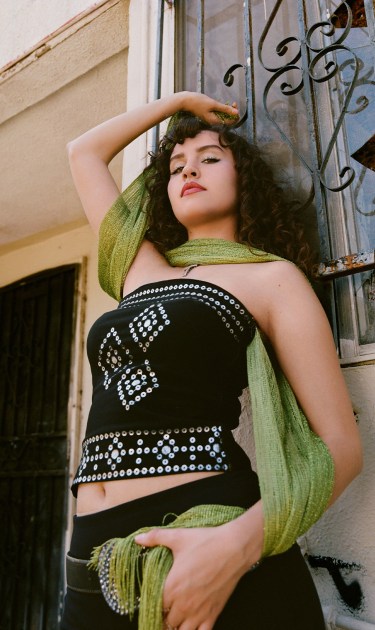It’s fair to assume that Santee Alley, the popular outdoor shopping market and epicenter of Los Angeles’s fashion district, is one of Estevie’s favorite places to hang out in the city. The 20-year-old singer and songwriter not only frequents it regularly but has immortalized the hustle and bustle of the sprawling callejones in her single “Santee.” It’s the ultimate ode to ballin’ on a budget and the endless supply of snacks—or “chuchulucos,” as Estevie calls them—found at every corner that fuel those spontaneous shopping sprees, all set to an irresistible and jaunty syncopated beat.
“It’s such a cool place,” Estevie tells Remezcla. “My mom and I go look for the telas and everything. I’ve been going there since I was nine to look for the fabrics and accessories for my outfits that me and my mom put together.” She holds a rough sketch of her next ensemble to the camera during the Zoom call. Much like her music, the beaded Selena-esque fit contains multitudes. “Ever since I was little, I was so obsessed with horses and always wanted to be a vaquera. I get to be a vaquera every day now,” she says with a laugh.
While acts such as Texas’s Grupo Frontera and Jalisco superstar Peso Pluma have taken música Mexicana to the worldwide stage in recent months by topping global streaming charts with their respective megahits, women continue to be underrepresented within this male-dominated new wave and have not experienced the same meteoric successes. Estevie’s music comes at a crucial point where fellow Gen Z artists like Yahritza Martinez from Yahritza y Su Esencia and Conexión Divina are carving out a space where young mexicanas can see themselves represented within the greater movement in real-time.
Estevie hails from Beaumont, CA, but mentions that she often traveled back and forth between Cali and Mexico throughout her childhood. Both environments had a formative influence on her artistry at a young age as she became more and more immersed in the worlds of regional Mexican and pop, taking an interest in the music of everyone from banda icon Jenni Rivera and former Grupo Límite frontwoman Alicia Villareal to Gwen Stefani. Estevie began singing around the age of nine, first practicing with a repertoire that leaned heavily on cumbia, norteño, ranchera, and banda songs that her father taught her.
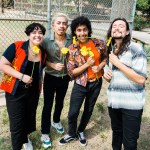
“That’s what we’d listen to at family parties,” she shares. “My family is also the reason why I wanted to start singing. Some of my aunts, uncles, and grandparents also sang, so I was like, ‘Hmm, I kind of wanna try this too,’” she adds.
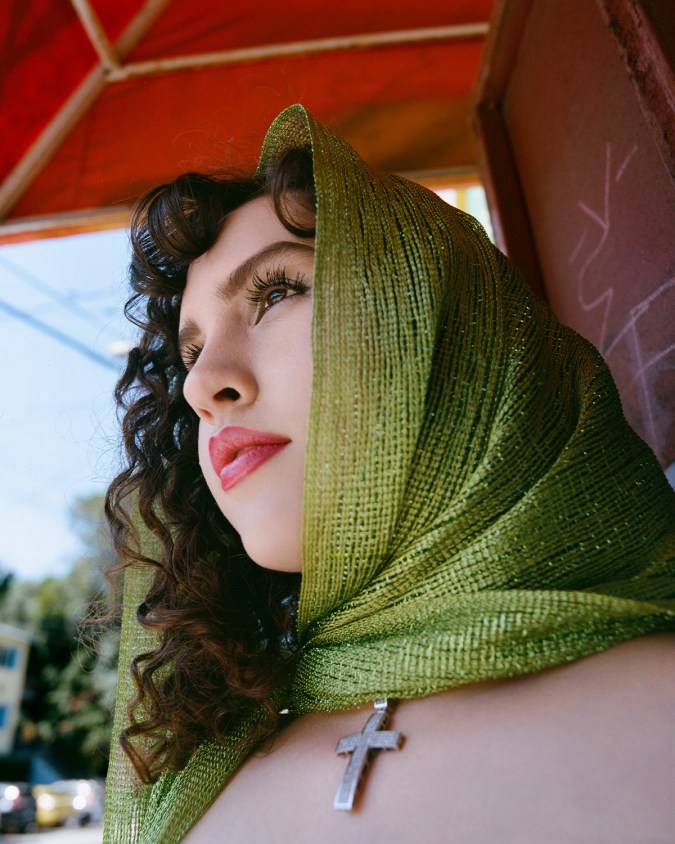
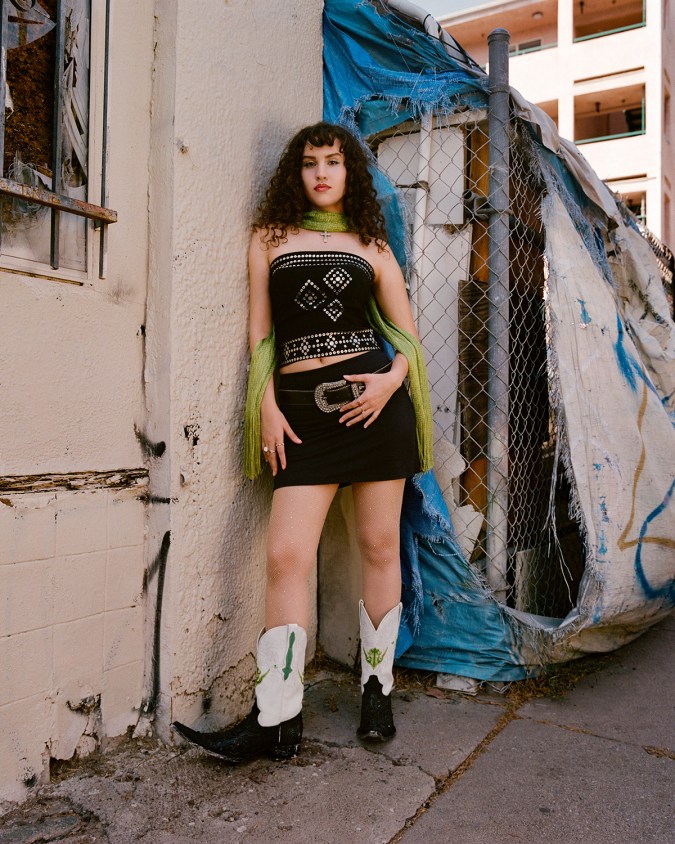
At 11 years old, she moved out to Mexico City and participated as a contestant on TV Azteca’s wildly popular singing competition series “La Academia Kids,” where she won second place among a group of young and aspiring singers from Mexico, Guatemala, and the U.S. With this placement under her belt, she continued to sing as a teenager, honing in on her technique by studying musical theater, classical music, and opera. At the time, she also released music under her birth name, Sarah Silva, before officially adopting the moniker Estevie just last year at the age of 19.
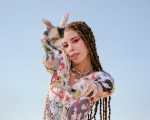
Then, one day in the middle of a YouTube video binge during the pandemic in 2021, Estevie came across a video of Villareal (who coincidentally was one of the judges during her time participating in “La Academia Kids”) performing “Ay! Papacito.” “I was like, ‘Wait, I remember this one. This is so cool. Why aren’t there more cumbia norteñas like this? Why aren’t there a lot more cumbia songs in general?’”
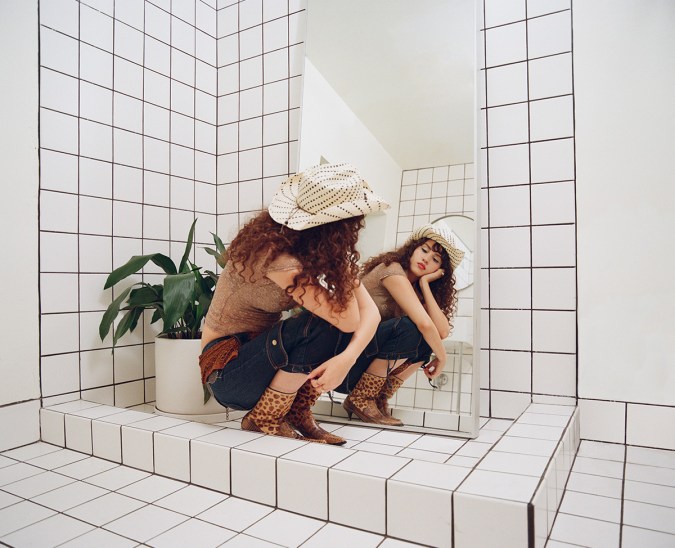
This realization also brought her back to how cumbia music was the lifeblood of her immediate surroundings and community gatherings. Back then, she was living in La Puente, CA. “In that area, there’s always a party happening on the weekends,” she recounts. “They’ll go on until 3 a.m., and there’s always cumbia or banda music.” She recalls showing up to one of the all-night ragers to find a live cumbia band playing. “I was so amazed by how everything sounded: the instruments, the accordion, the organ, the guiro, the percussion,” the artist says. She was so exhilarated that she made her way to the front and joined the band for an impromptu sing-along.

“I just love dancing and the way [cumbia] makes me feel. That’s what made me want to start playing it.”
Finding inspiration in pop-oriented treasures like “Ay! Papacito” and the backyard band’s ability to move her to her feet, she followed her impulse to apply cumbia’s driving double-beats and accordion-led melodies to her own songs. “I just love dancing and the way [cumbia] makes me feel. That’s what made me want to start playing it,” she says.
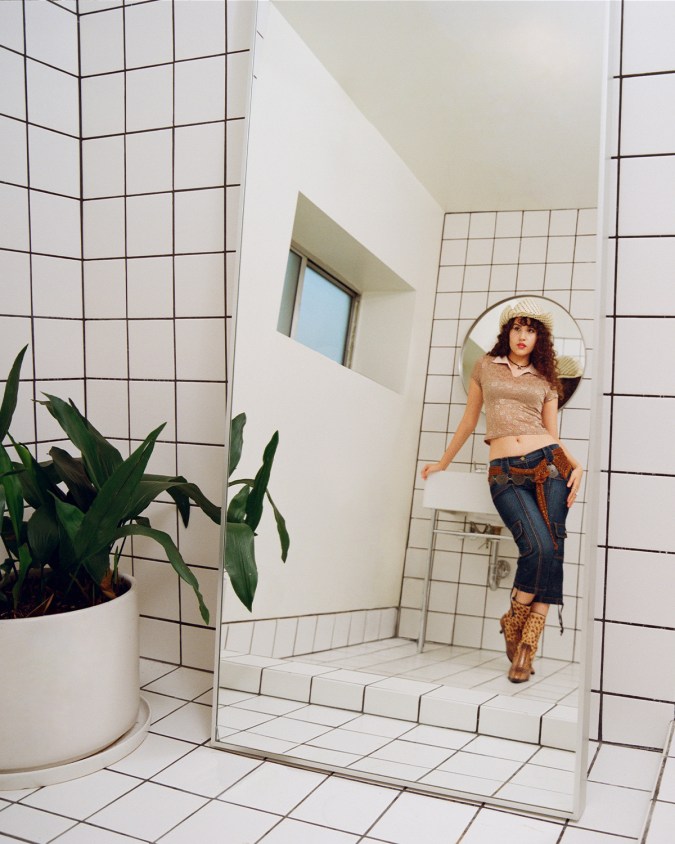
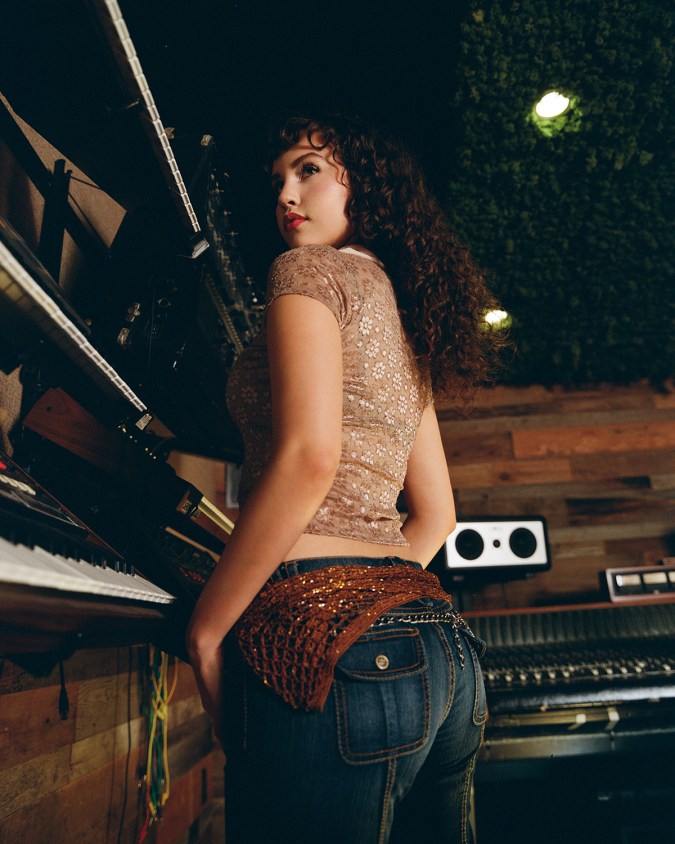
Since then, she’s been unstoppable, and her musical multifacetedness has become clearer in her latest material as Estevie. When she’s not cranking out cover-mashups of viral música Mexicana hits that some may say are arguably better than the originals, she’s linking up with rising Coachella Valley sierreño act DannyLux for brooding ballads like “Triste Verano” and guest-spotting on Eslabon Armado records. On “Canela,” she recalls the early vaquera chic aesthetic of Ana Bárbara and the dynamic vocal deliveries of ‘90s norteño trendsetters like Villareal.

Throughout her upcoming EP, due later this fall, Estevie builds up her own style inspired by cumbia sonidera and cumbia norteña–two styles and subgenres specific to Mexico, both heavily influenced by original cumbia Colombiana–but with plenty of modern twists tossed in. The opening track, the newly released “Miami,” starts with a galloping, almost pop punk-like 4/4 beat before decelerating to a trippy, slow-tempo cumbia stacked with autotune croons. It also captures her love for the tribal guarachero style of music popularized by 3BallMTY in the early 2010s.
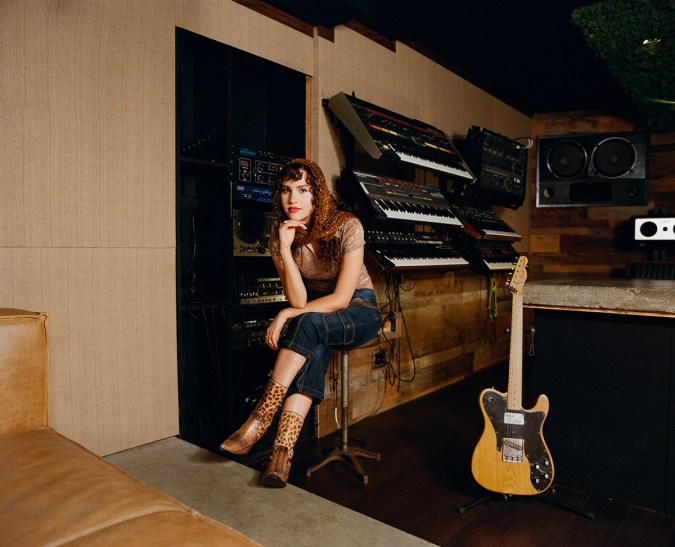
Estevie picks up where her larger-than-life idols Ana Barbara and Alicia Villareal left off, but her ability to push past any single genre’s limitations and take nostalgic sounds into new sonic territory make her one of the most exciting new artists to watch out for.

“I didn’t really know what route to take, who I was, or who I wanted to be as an artist. I think I just had to look back and my answer was there,” she shares. “It was about getting back to my roots and going back to what I started with, which was regional music.”
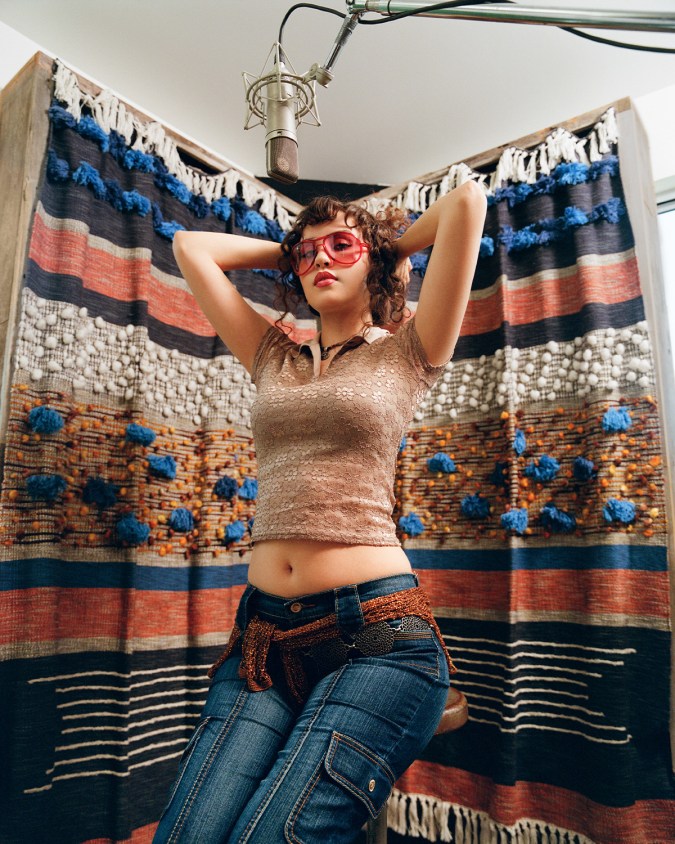
Photos by Thalia Gochez.
